We are locally dedicated with international scale.
Africa
-
South Africa
Middle East
-
Kuwait
-
Oman
-
Qatar
-
Saudi Arabia
-
United Arab Emirates
We are locally dedicated with international scale.
Africa
-
South Africa
Middle East
-
Kuwait
-
Oman
-
Qatar
-
Saudi Arabia
-
United Arab Emirates
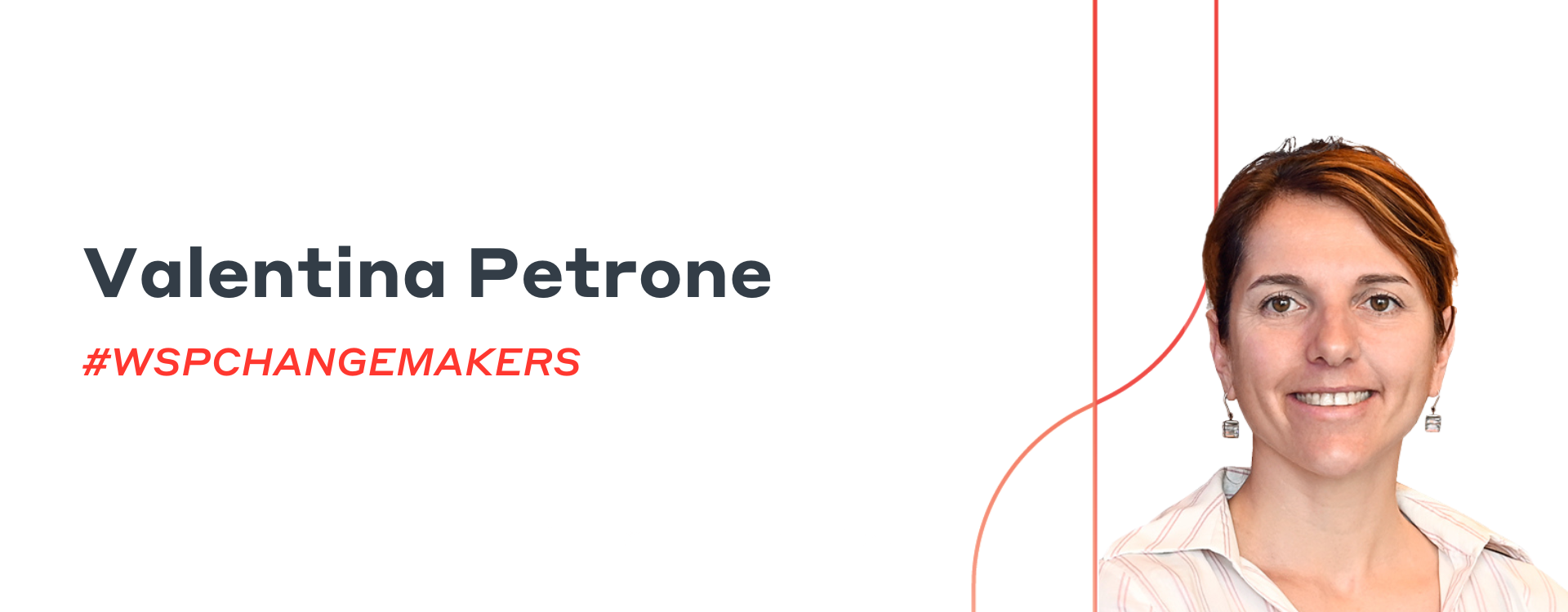
Valentina Petrone is passionate about reducing waste in the built environment. As WSP’s Future Ready™ Circular Economy Lead she implements Circular Economy principles and strategies that help minimise the construction industry’s environmental footprint.
Is Circular Economy all about reducing waste?
It’s all about ‘designing out’ waste. Circular Economy looks at how we manage resources, how we design and manufacture products, and what we do with them afterwards. A Circular Economy approach encourages us to shift away from the linear route of, ‘take, make, use and dispose’ and reset our minds to focus on maintaining materials in use at their highest value for as long as possible.
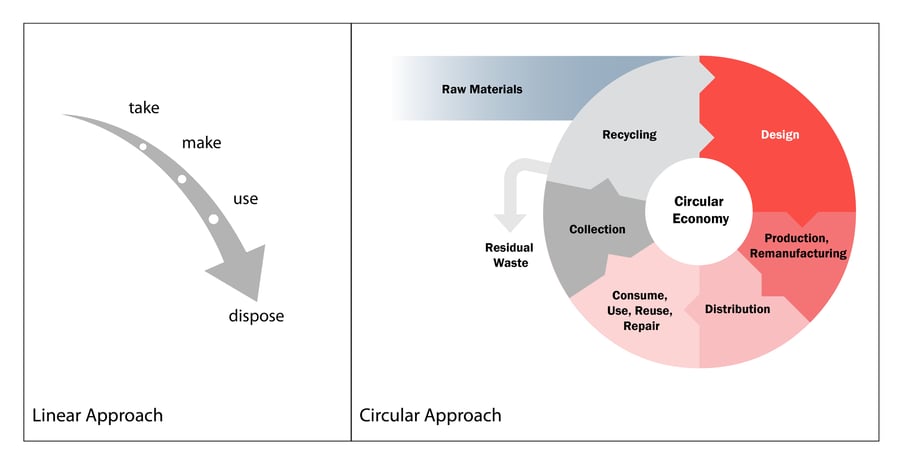
Linear vs Circular Approach
In the context of the built environment, Circular Economy considers the whole building life cycle – it means a change to the way we design, operate and manage our buildings and cities by implementing Circular Economy Principles (1. Design out Waste, 2. Keep materials in use, 3. Return materials to system,) and Circular Design Strategies as visualised below.
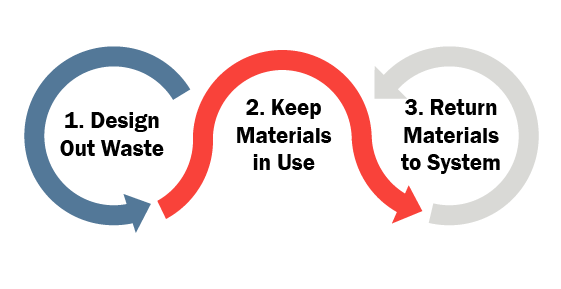
How did your passion for Circular Economy first come about?
I’m originally from Italy and my education background is broadly in architecture and design. For the first 10 years of my career in Europe, I focused on implementing solar passive design strategies and energy-saving solutions to my projects. My interest in the design field was always to help minimise the environmental footprint. Waste avoidance and water minimisation also play a key role in this.
When I relocated to Perth with my family 8 years ago, I saw that many buildings in Australia were quick to be demolished. This was a shock to me, because Italy has a strong tradition of conservation and restoration, you don’t see much demolition. So, I became very conscious of the huge impact that construction and demolition waste has on the community here, and I joined a local environmental group to engage with my new Australian community.
With my passion and knowledge about waste reduction, I found that this was a good way to engage with people who were not familiar with sustainability and the concept of the Circular Economy. Garbage is a good example that I often use as an entry point into this topic. By simply using reusable coffee cups or shopping bags, we can see the benefits of our actions which are a direct result of a positive community behavioural change.
Eventually, I was able to combine my architectural background with my passion for eliminating waste and promoting best environmental practises in the property industry. I’m excited to continue my journey with WSP to lead the Circular Economy conversation in the built environment and drive positive change.
In what stage of a building’s lifecycle would we consider a Circular Economy approach?
If we were to design and operate a building according to Circular Economy principles, we would start by embedding Circular Design Strategies very early in a project. This will make it easier to identify and implement variable solutions. Questions we might ask include:
- Can we retain and repurpose existing buildings to build less?
- How do we optimise flexibility and quality of design to enable changes that might take place over, say, a 50-year period?
- Can we look at new structures that can be easily disassembled and used elsewhere at the end of the building’s life?
- Can we select circular materials that have a lower impact on the environment?
Circular Economy is often mistaken as a concept limited to recycling or materials selection. However, in the context of the built environment, it really involves having the initiative to design out waste across the whole life cycle of a project – from demolition to construction, throughout operations, and right up until end of life (or better said ‘end of use’) which will become the starting point of a new project.
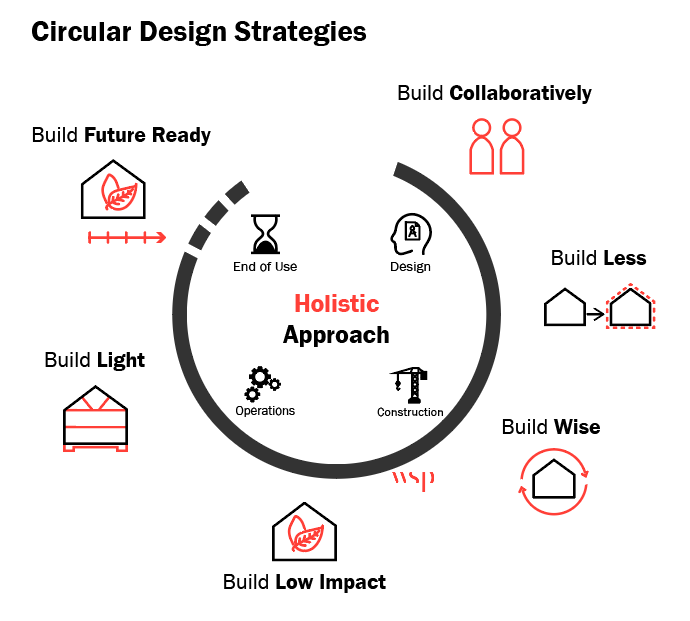
For example, when a company moves into a building, it’s easy to just throw out the old and buy everything new. But what if we can shift the onus for quality, maintenance and repair onto the stakeholders and service providers. Could everything be rented – furniture, lighting systems, even lifts? Rather than throwing away a chair because it’s cheaper to replace than fix, you can send it back for mending. This shifts the whole renting system. The focus would then be on service and efficiency to repair and maintain items – thus creating jobs in this space as well. What if we can think like this? I believe, eventually the Circular Economy could be the catalyst for a big economic shift.
Is the Australian construction industry ready for such a change?
Given the environmental impact of construction, the government is accelerating the push to implement these principles. We’ve come a long way since we started this conversation in Australia a few years ago, and I do feel the construction industry is now ready to engage.
Last year was a big year for us at WSP with the completion of Circular Design Guidelines for the NSW Department of Planning, Industry and Environment (DPIE). The goal of these guidelines is to educate the building industry, promote waste reduction and materials circularity to create a Future Ready™ built environment. Ultimately, the goal is to facilitate the transition to a Circular Economy through design choices.
As passionate keynote speaker, I regularly get invited to industry conferences and events to talk about Circular Economy. The Australian construction industry is becoming more aware about the need for a positive shift towards a circular built environment. However there is still uncertainty on how to effectively embed Circular Economy principles and strategies into projects, combined with a perceived additional cost risk. The good news is that, according to international research, when you consider the whole life cycle of the building there are key financial benefits including building a higher future asset value, capturing residual value from the construction materials and achieving higher rentability – so it makes sense economically. And we’ve seen this in action.
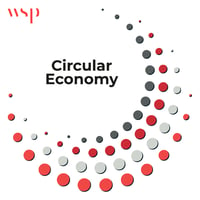
WSP has already delivered several Circular Economy projects. Our Waste Management & Circular Economy team has facilitated a holistic application of Circular Economy principles at the Master Planning Stage for the Moree Special Activation Precinct (SAP). This enabled us to ensure that infrastructure and resources are managed as efficiently as possible to minimise wastes, including the efficient location or the co-location of certain land uses and infrastructure. WSP has already delivered several Circular Economy projects. Our Waste Management & Circular Economy team has facilitated a holistic application of Circular Economy principles at the Master Planning Stage for the Moree Special Activation Precinct (SAP). This enabled us to ensure that infrastructure and resources are managed as efficiently as possible to minimise wastes, including the efficient location or the co-location of certain land uses and infrastructure.
Other Circular Economy projects include the development of an industry-leading functional requirement which embeds Circular Economy principles within the delivered design. This includes setting targets for construction, operation, and de-construction for a new development in Victoria. WSP has also prepared a Construction and Demolition Waste Reduction and Reporting Guideline in line with Circular Economy principles for a well-renowned Canadian commercial property developer/portfolio owner.
We also had a positive start to 2022. WSP was appointed as the Circular Economy and Waste Management consultant for two high-profile master planning projects in Melbourne and Sydney. The aim of both projects is to design innovative urban areas with Circular Economy integrated into every aspect of the city's buildings, infrastructure, and operations. Applying a holistic approach, we will develop a Circular Economy Strategy that will design out waste, regenerate natural systems, use resources to their highest value and limit waste to landfill. We’ll do this by embedding Circular Economy principles into infrastructure, land use planning, space allocation, precinct and building design.
What’s next in this conversation?
To me, this is more than just a career. I’m passionate about leading the Circular Economy conversation. As we approach a new year, I will continue to provide advice to government agencies and to guide construction industry stakeholders on how to effectively transition towards a circular built environment.
I’m also honoured to have a place as Chairperson of the Property Council of Australia's National Working Group on Circular Economy. We are helping to define the needs of the property industry and establishing a common language and approach to Circular Economy.
What’s the takeaway for those just joining the conversation?
Embedding Circular Economy principles in projects has the potential to save money for the both the public and the private sectors. It will also create jobs, reduce pressure on the environment, improve the security of the raw materials’ supply chain, increase competitiveness, stimulate innovation and boost economic growth.
It is a worthwhile investment that will create great places to live, for many generations to come.
Valentina is speaking at the 2022 MECLA Spotlight Event – where the theme of ‘Helping Queensland decarbonise its construction supply chain’ will be addressed in anticipation of the 2032 Olympic Games. Her presentation will focus on the opportunities for reducing carbon and driving greater resource productivity through a circularity and systems thinking approach to reducing embodied carbon.
Read more about Circular Economy and contact Valentina Petrone.
.png)